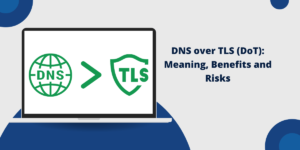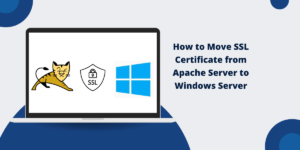The Payment Card Industry Data Security Standard (PCI DSS) requires businesses that process card payments to perform these scans on a quarterly basis. The report shows vulnerabilities through severity levels while offering complete technical information about each issue together with recommended remediation steps. Companies need to resolve critical issues before they can pass a rescan to maintain PCI compliance.
What is a PCI Scan Vulnerability Report?
The PCI DSS requires PCI Scan Vulnerability Reports to detect network weaknesses that could compromise credit card data. An Approved Scanning Vendor (ASV) performs this assessment to identify vulnerabilities such as outdated software and misconfigured firewalls and weak encryption which businesses must address before hackers can exploit them.
The Growing Threat to Payment Systems
Recent statistics paint a concerning picture:
- Payment system breaches increased by 28% year-over-year (2023-2024)
- The average cost of a payment card breach now exceeds $4.45 million
- 60% of small businesses that suffer payment breaches go out of business within six months
The Evolution of PCI Scanning: 2025 Updates
The PCI Security Standards Council has established multiple essential modifications for 2025.
- The PCI Security Standards Council has strengthened its focus on API security within vulnerability scanning.
- The new standards establish more rigorous security requirements for cloud computing systems.
- The new scoring system evaluates the severity of detected vulnerabilities.
- The scanning requirements now extend to hybrid network environments.
Purpose of PCI Scans
- The detection of security vulnerabilities which could result in data breaches is the main objective.
- The PCI DSS Requirement 11.2.2 demands merchants to perform quarterly external scans through Approved Scanning Vendors.
Types of PCI Scans
- External Scans: Examine internet-facing systems (websites, firewalls, APIs).
- Internal Scans: Assess internal networks (POS systems, databases).
Who Needs These Reports?
- Merchants processing over 6 million transactions annually (Level 1)
- Service providers handling cardholder data
- Any business required to validate PCI DSS compliance
Why PCI Vulnerability Scans Are Important?
1. Reduce Risk of Data Breaches
The main reason behind data breaches stems from unaddressed system vulnerabilities. Businesses can maintain security advantages through regular scanning activities.
2. Meet Compliance Standards
The PCI DSS requires merchants to perform quarterly vulnerability scans. Non-compliance can lead to:
- Fines from card brands (Visa, Mastercard).
- Increased transaction fees.
- Loss of merchant account privileges.
3. Avoid Financial and Reputational Damage
A single breach can cost millions in fines, lawsuits, and lost customer trust.
What’s Included in a PCI Scan Report?
The PCI scan report delivers an extensive evaluation of security findings. Key sections include:
1. Scan Summary
- Scope (IP addresses, domains scanned).
- Date and time of scan.
- Compliance status (Pass/Fail).
2. Identified Vulnerabilities
- Critical (Immediate risk: e.g., SQL injection).
- High (Serious flaws: e.g., outdated SSL/TLS).
- Medium/Low (Less urgent but still important).
3. Remediation Steps
- Patch management recommendations.
- Configuration fixes (firewall rules, encryption updates).
- Best practices for secure coding (if web apps are scanned).
4. Additional Recommendations
- Follow-up scan scheduling.
- Suggestions for improving overall security posture.
How to Interpret and Resolve Scan Findings?
1. Prioritize Critical & High-Risk Vulnerabilities
- Example: A missing security patch on a payment gateway should be fixed immediately.
2. Common Web App Vulnerabilities to Address
- SQL Injection: Sanitize database inputs.
- Cross-Site Scripting (XSS): Implement input validation.
- Outdated Software: Apply patches promptly.
3. Best Practices for Remediation
- Work with IT/security teams to apply fixes.
- Retest after remediation to confirm issues are resolved.
What to Expect for PCI Scans in 2025
1. Emerging Threats
- The use of AI-powered attacks will need more sophisticated scanning methods.
- The growth of digital payments will lead to greater attention on API security.
2. New PCI DSS Requirements
- The new PCI DSS v4.0 version will implement more rigorous validation procedures.
- The new standard will focus on continuous monitoring instead of quarterly scans.
3. Scan Process Changes
- The scanning process will shift toward automated real-time solutions.
- The integration of DevSecOps will enable proactive vulnerability management.
4. Ongoing Security Vigilance
- Businesses need to maintain continuous awareness about both security threats and compliance changes.
PCI Reporting Best Practices for Merchants
- Scans should be used to gain security insights instead of just checking compliance boxes to improve security.
- Track Progress Over Time: Compare reports to measure risk reduction.
- Communicate with Providers: Ensure ASVs (Approved Scanning Vendors) explain findings clearly.
- Integrate with Employee Training: Educate staff on security best practices.
What Are the Best PCI DSS Vulnerability Scanners?
Businesses must use Approved Scanning Vendors (ASVs) which are security tools certified by the PCI Security Standards Council (PCI SSC) for performing vulnerability scans to meet PCI DSS requirements. The following list presents the top PCI DSS vulnerability scanners for 2025:
1. Qualys PCI Compliance
Best for: Cloud-based scanning, automated compliance reporting

- ASV-certified external and internal scanning
- Continuous monitoring with real-time alerts
- Detailed remediation guidance
2. Tenable.io (Nessus)
Best for: Enterprises with complex IT environments

- Comprehensive vulnerability detection (CVSS scoring)
- Integration with SIEM and ticketing systems
- Supports cloud, on-premises, and hybrid networks
3. Rapid7 Nexpose
Best for: Dynamic risk assessment and threat prioritization

- Real-time vulnerability analytics
- Customizable compliance reporting
- Automated remediation workflows
4. Trustwave Vulnerability Management
Best for: Managed security service providers (MSSPs)

Key Features:
- ASV-approved scanning with detailed PCI reports
- Expert-led remediation support
- Combines scanning with penetration testing
5. OpenVAS (Open Source Option)
Best for: Small businesses with budget constraints

- Free and open-source vulnerability scanning
- Regular updates via Greenbone Security Feed
- Can be customized for basic PCI compliance checks
6. Detectify (Web Application Scanning)
Best for: E-commerce and SaaS businesses

Key Features:
- Specializes in OWASP Top 10 vulnerabilities
- Automated scanning for APIs and web apps
- Crowdsourced security research for latest threats
Final Thoughts
PCI vulnerability scans serve as essential tools for organizations to maintain security and compliance standards in 2025. Businesses can detect security risks and fulfill PCI DSS requirements and stop expensive breaches through the use of ASV-approved scanners. Regular scans together with proactive remediation practices protect customer data while preventing organizations from receiving fines.
The evolution of cyber threats requires businesses to stay ahead through continuous monitoring and the adoption of new security trends. Your business needs to prioritize security through proper scanning tool selection to maintain protection in the expanding digital payment environment. Stay compliant, stay secure!
Frequently Asked Questions (FAQs) about Port 5900
How often should external scans be performed?
The PCI standard requires quarterly scans but organizations should perform monthly scans in high-risk environments.
Can internal systems be included in these scans?
External scans examine perimeter systems but internal scanning represents a different PCI requirement.
What’s the difference between ASV and internal vulnerability scans?
The ASV scanning process verifies external systems for compliance standards yet internal scans evaluate the entire network infrastructure.
What is included in a PCI scan report?
The PCI scan report includes detailed security findings which result from network vulnerability scans. The report includes detailed information about identified vulnerabilities together with their severity ratings and step-by-step instructions for remediation. Security teams use these reports to address weaknesses in their payment card systems.
How often should PCI vulnerability scans be performed?
The PCI standard requires organizations to run PCI vulnerability scans four times annually. The PCI standard requires additional scanning after organizations perform major network changes or system upgrades. Payment card brands need organizations to submit passing scan reports to maintain their compliance status.
What is the difference between PCI scanning and penetration testing?
PCI scanning makes use of automated tools to detect known system vulnerabilities. Penetration testing involves human testers actively attempting to breach security measures. Scans check for common weaknesses, while penetration tests simulate real attacks.
How do I fix PCI scan failures?
Organizations should immediately address all identified vulnerabilities. System administrators need to perform software updates and close unneeded ports while enhancing security settings. A rescan confirms the fixes and generates a passing report.
Who can perform PCI vulnerability scans?
The PCI Security Standards Council has authorized only Approved Scanning Vendors (ASVs) to perform official PCI scans. Organizations need to work with certified vendors to fulfill their PCI compliance requirements.
What happens if you fail a PCI scan?
Organizations must address failed PCI scan vulnerabilities right away. Organizations need to fix all problems before running a successful rescan within thirty days. Organizations face both financial penalties and card processing restrictions when they fail PCI scans multiple times.

Priya Mervana
 Verified Web Security Experts
Verified Web Security Experts
Priya Mervana is working at SSLInsights.com as a web security expert with over 10 years of experience writing about encryption, SSL certificates, and online privacy. She aims to make complex security topics easily understandable for everyday internet users.



